
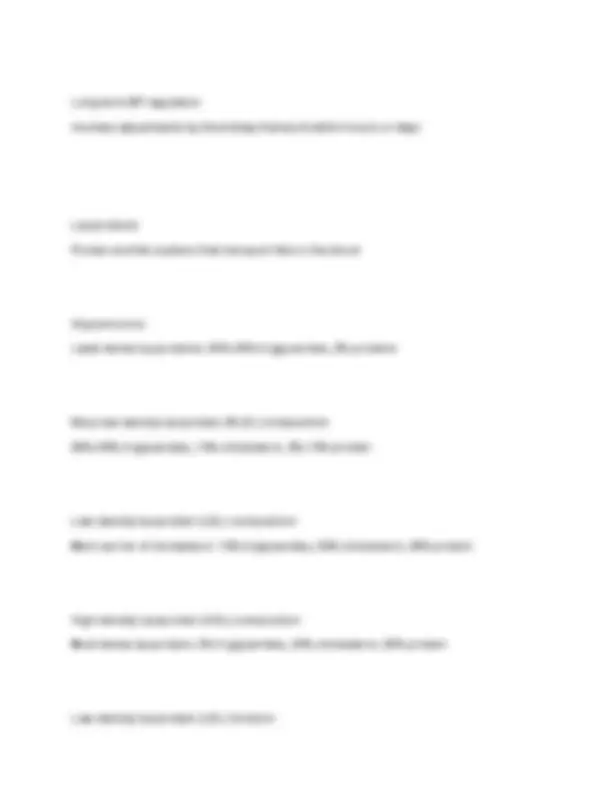
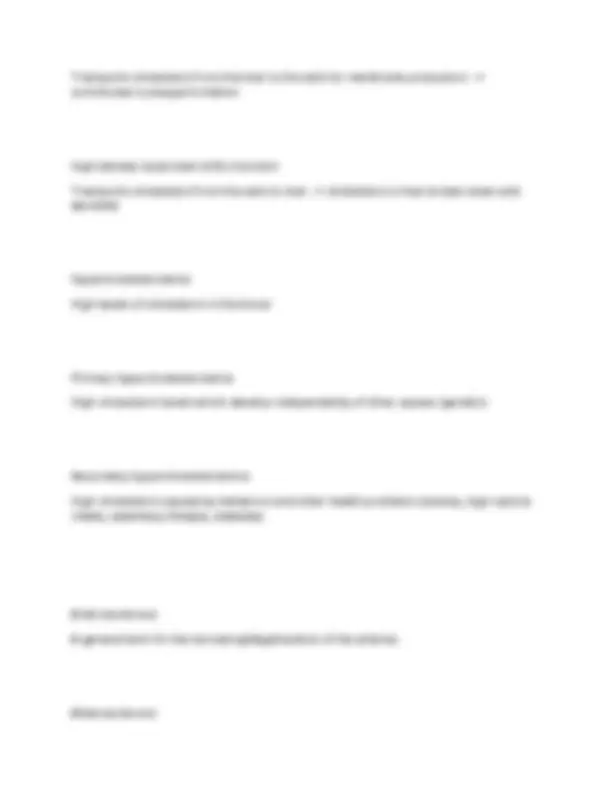
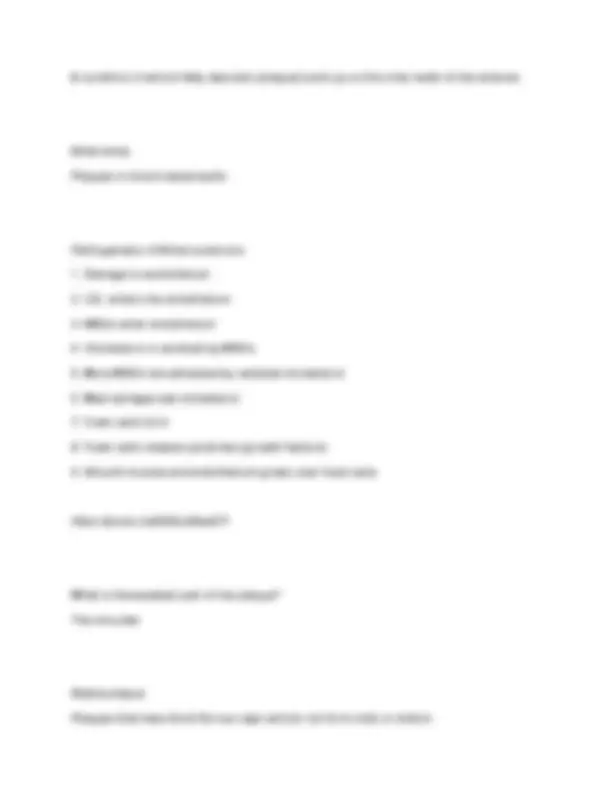
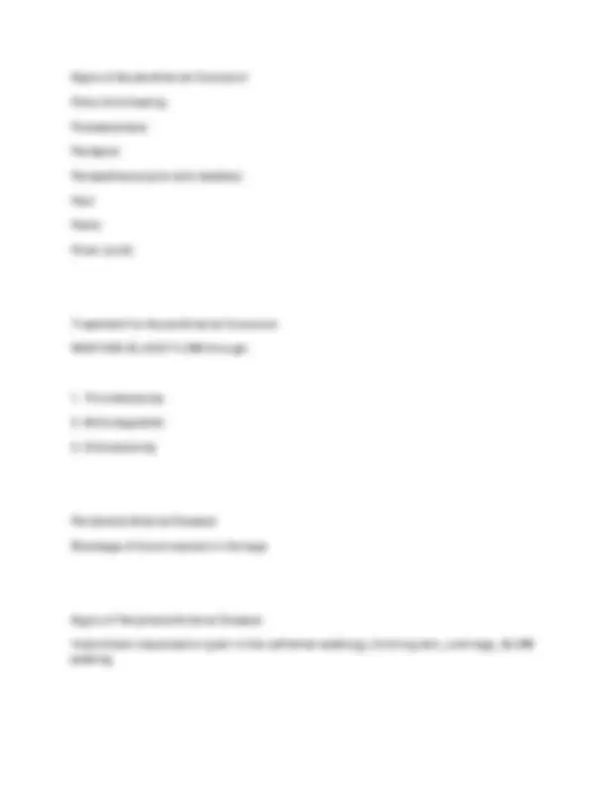
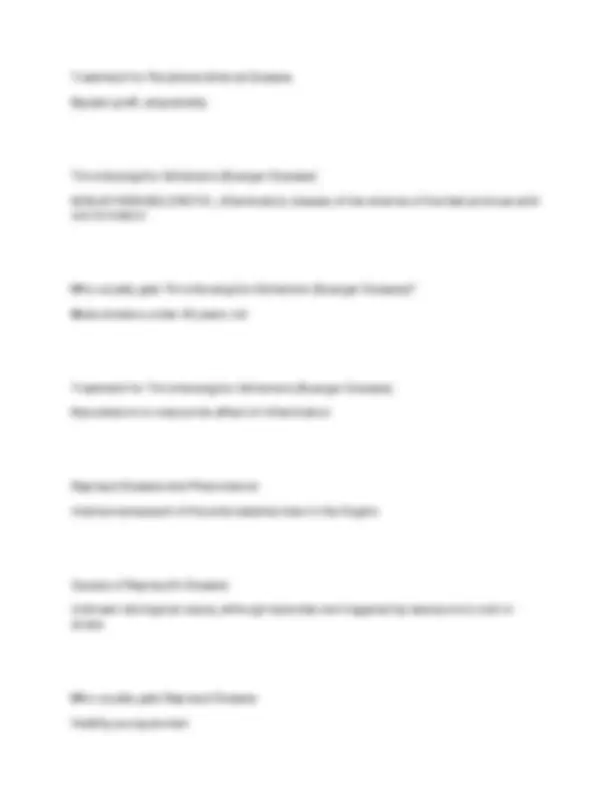
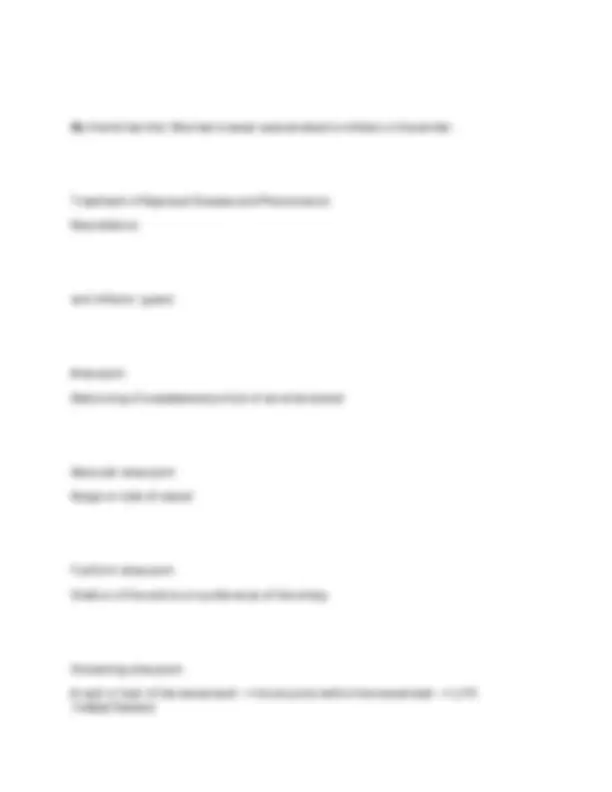
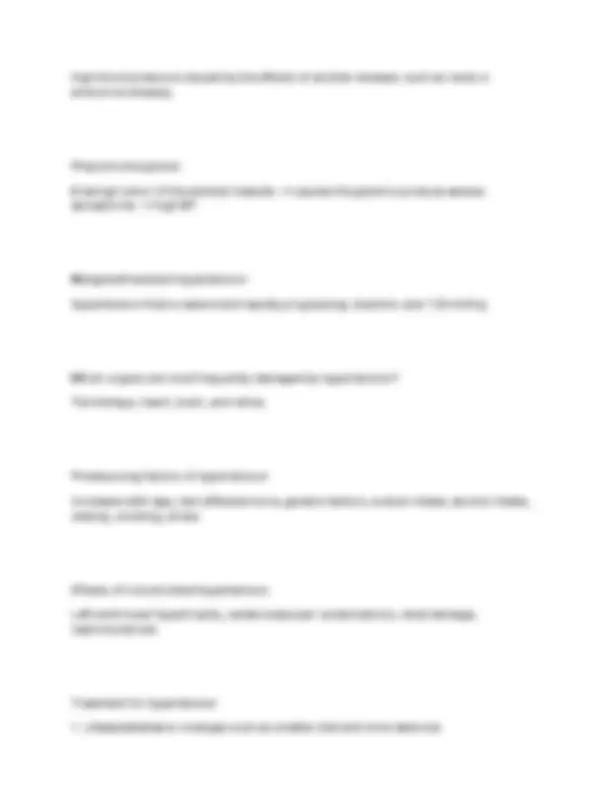
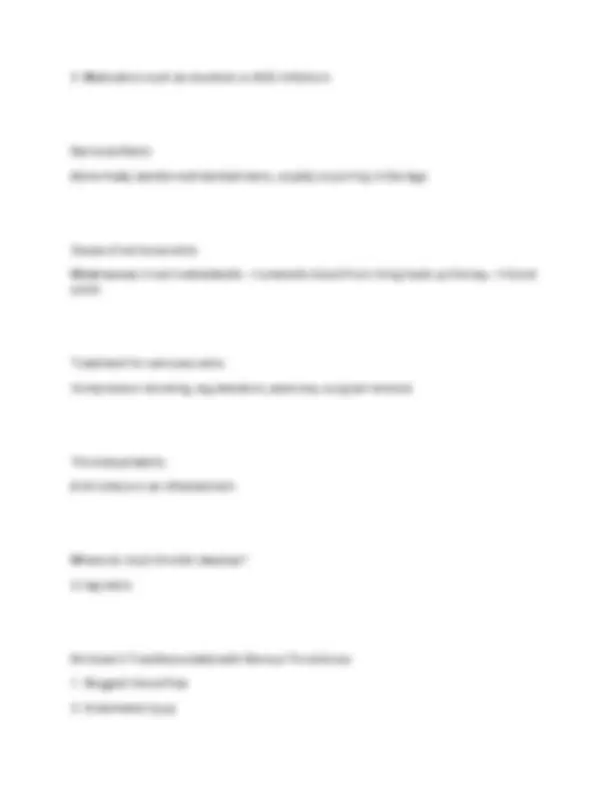
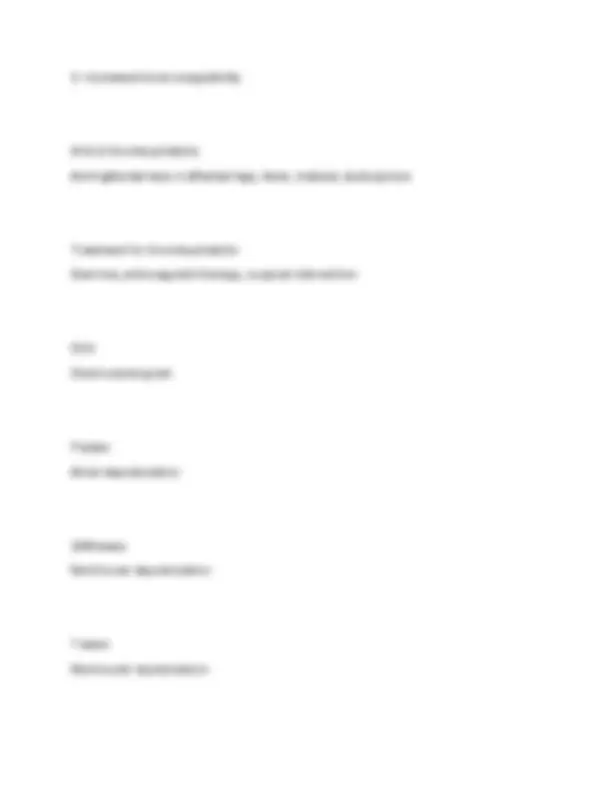
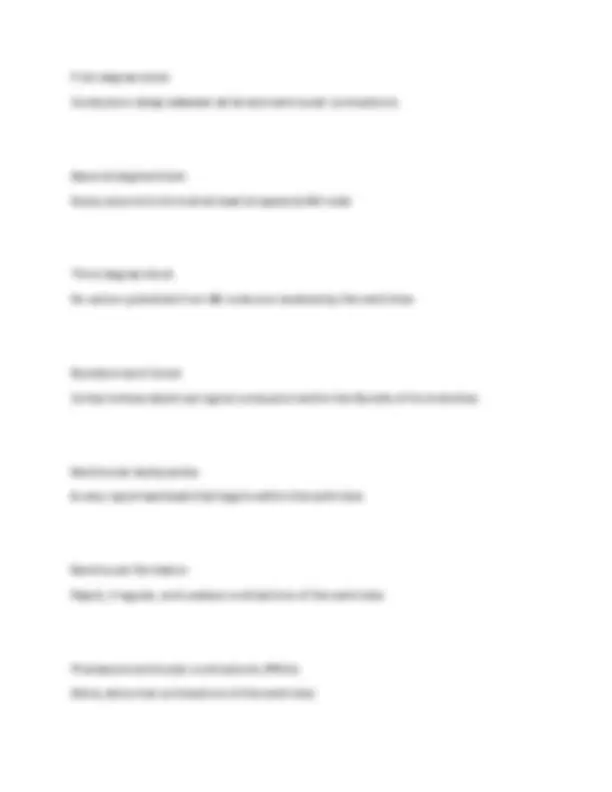


Study with the several resources on Docsity

Earn points by helping other students or get them with a premium plan


Prepare for your exams
Study with the several resources on Docsity

Earn points to download
Earn points by helping other students or get them with a premium plan
Community
Ask the community for help and clear up your study doubts
Discover the best universities in your country according to Docsity users
Free resources
Download our free guides on studying techniques, anxiety management strategies, and thesis advice from Docsity tutors
A comprehensive overview of cardiovascular physiology, focusing on blood flow regulation, blood pressure control, and cardiac rhythm. it includes numerous questions and answers covering key concepts such as the role of the vascular endothelium, the sympathetic nervous system's influence on blood pressure, lipoprotein function, atherosclerosis, and various cardiovascular disorders like aneurysms and thrombophlebitis. the detailed explanations make it a valuable resource for students studying human physiology.
Typology: Exams
1 / 18

This page cannot be seen from the preview
Don't miss anything!











How does the vascular endothelium regulate thrombosis?Endothelium releases:
How does the vascular endothelium modulate blood flow?Nitric oxide is secreted by endothelium --> relaxes smooth muscle and dilates blood vessel
How does the vascular endothelium regulate the inflammatory and immune response?The blood vessels release adhesion molecules to call WBCs to injury sites
Vascular Smooth MuscleForms the middle layer of blood vessels, controls BP
How does the SNS control BP?SNS releases epinephrine --> vasoconstriction
Systolic pressureThe pressure in the arteries when the heart is contracting
Diastolic pressureThe pressure in the arteries when the heart is at rest
How does the sympathetic branch of ANS control BPIncreased epinephrine output from SNS --> increased vasoconstriction and BP
Which hormones increase BP1. Antidiuretic hormone
Which hormones decrease BPAtrial natriuretic peptide (ANP)
Short term BP regulation1. Neural regulation by baroreceptors
Transports cholesterol from the liver to the cells for membrane production -->contributes to plaque formation
High-density lipoprotein (HDL) functionTransports cholesterol from the cells to liver --> cholesterol is then broken down and excreted HypercholesterolemiaHigh levels of cholesterol in the blood
Primary hypercholesterolemiaHigh cholesterol levels which develop independently of other causes (genetic)
Secondary hypercholesterolemiaHigh cholesterol caused by behaviors and other health problems (obesity, high-calorie intake, sedentary lifestyle, diabetes)
ArteriosclerosisA general term for the narrowing/degeneration of the arteries
Atherosclerosis
A condition in which fatty deposits (plaque) build up on the inner walls of the arteries AtheromasPlaques in blood vessel walls
Pathogenesis of Atherosclerosis1. Damage to endothelium
Stable plaquePlaques that have thick fibrous caps and do not form clots or emboli
What complications occur in large vessels due to atherosclerosis?In large vessels, the vessels weaken and thrombi are formed
What complications occur in small vessels due to atherosclerosis?In smaller vessels, occlusion --> leads to ischemia and infarction
Diagnostic Tests for Atherosclerosis1. Serum lipid levels
What do nuclear medicine studies test for?They measure the degree of tissue perfusion in vessel walls
Management of atherosclerosis includes:Weight loss, increase exercise, reduction of sodium intake, stop smoking
Acute Arterial OcclusionA sudden blockage of arterial blood flow that occurs because of a thrombus or embolus
Signs of Acute Arterial OcclusionPistol shot feeling PulselessnessParalysis Paraesthesia (pins and needles)Pain PallorPolar (cold)
Treatment for Acute Arterial OcclusionRESTORE BLOOD FLOW through:
Signs of Peripheral Arterial DiseaseIntermittent claudication (pain in the calf when walking), thinning skin, cold legs, SLOW walking
My friend has this! She has to wear special electric mittens in the winter Treatment of Raynaud Disease and PhenomenonVasodilators
and mittens i guess AneurysmBallooning of a weakened portion of an arterial wall
Saccular aneurysmBulge on side of vessel
Fusiform aneurysmDilation of the entire circumference of the artery
Dissecting aneurysmA split or tear of the vessel wall --> blood pools within the vessel wall --> LIFE THREATENING!
Signs of Dissecting AneurysmExcruciating pain, a "ripping" feeling, unobtainable pulse and BP
Who is most susceptible to dissecting aneurysms?40-60 year old men with hypertension
everyone go check on ur dad right now!! Berry aneurysmAneurysm in the Circle of Willis in the brain; the enlargement looks like a blueberry
Where are Saccular and Fusiform aneurysms usually found?Most often found in the thoracic and abdominal aorta
What causes aneurysms?Atherosclerosis, hypertension, genetic defects
Who is most susceptible to abdominal aortic aneurysms?Men above the age of 50 who have hypertension
High blood pressure caused by the effects of another disease; such as renal orendocrine disease,
PheochromocytomaA benign tumor of the adrenal medulla --> causes the gland to produce excess epinephrine --> high BP Malignant/resistant hypertensionHypertension that is severe and rapidly progressing; diastolic over 120 mmHg
Which organs are most frequently damaged by hypertension?The kidneys, heart, brain, and retina
Predisposing factors of hypertensionIncreases with age, men affected more, genetic factors, sodium intake, alcohol intake, obesity, smoking, stress Effects of Uncontrolled HypertensionLeft ventricular hypertrophy, cerebrovascular complications, renal damage, nephrosclerosis Treatment for hypertension1. Lifestyle/behavior changes such as a better diet and more exercise
Cause of varicose veinsWeaknesses in vein valves/walls --> prevents blood from rising back up the leg --> blood pools Treatment for varicose veinsCompression stocking, leg elevation, exercise, surgical removal
ThrombophlebitisA thrombus in an inflamed vein
Where do most thrombi develop?In leg veins
Virchow's Triad Associated with Venous Thrombosis1. Sluggish blood flow
P-R intervalStart of atrial depolarization to start of ventricular depolarization
S-T segmentEnd of ventricular depolarization and start of ventricular repolarization
Q-T intervalBeginning of ventricular depolarization through ventricular repolarization
Cardiac Dysrhythmias (Arrhythmias)Deviations from normal cardiac rate/rhythm
What causes cardiac dysrhythmias?Electrolyte abnormalities, fever, hypoxia, toxic drugs
SA nodeThe sinoatrial node, aka the pacemaker of the heart
BradycardiaRegular, slow heart rate (SA node abnormalities)
TachycardiaRegular, fast heart rate (SA node abnormalities)
Sick sinus syndromeAltering bradycardia and tachycardia
Premature atrial contractionsExtra contractions of the atria (can be caused by stress, caffeine, drugs)
Atrial flutterRapid, regular contractions of the atria (160-350 bpm), which are OUT OF SYNC with the ventricles Atrial fibrillationRapid, random, ineffective contractions of the atrium (over 350 bpm) which are OUT OF SYNC with the ventricles Heart blocksCondition in which the conduction of electrical impulse is delayed or stopped at AV node or bundle of His